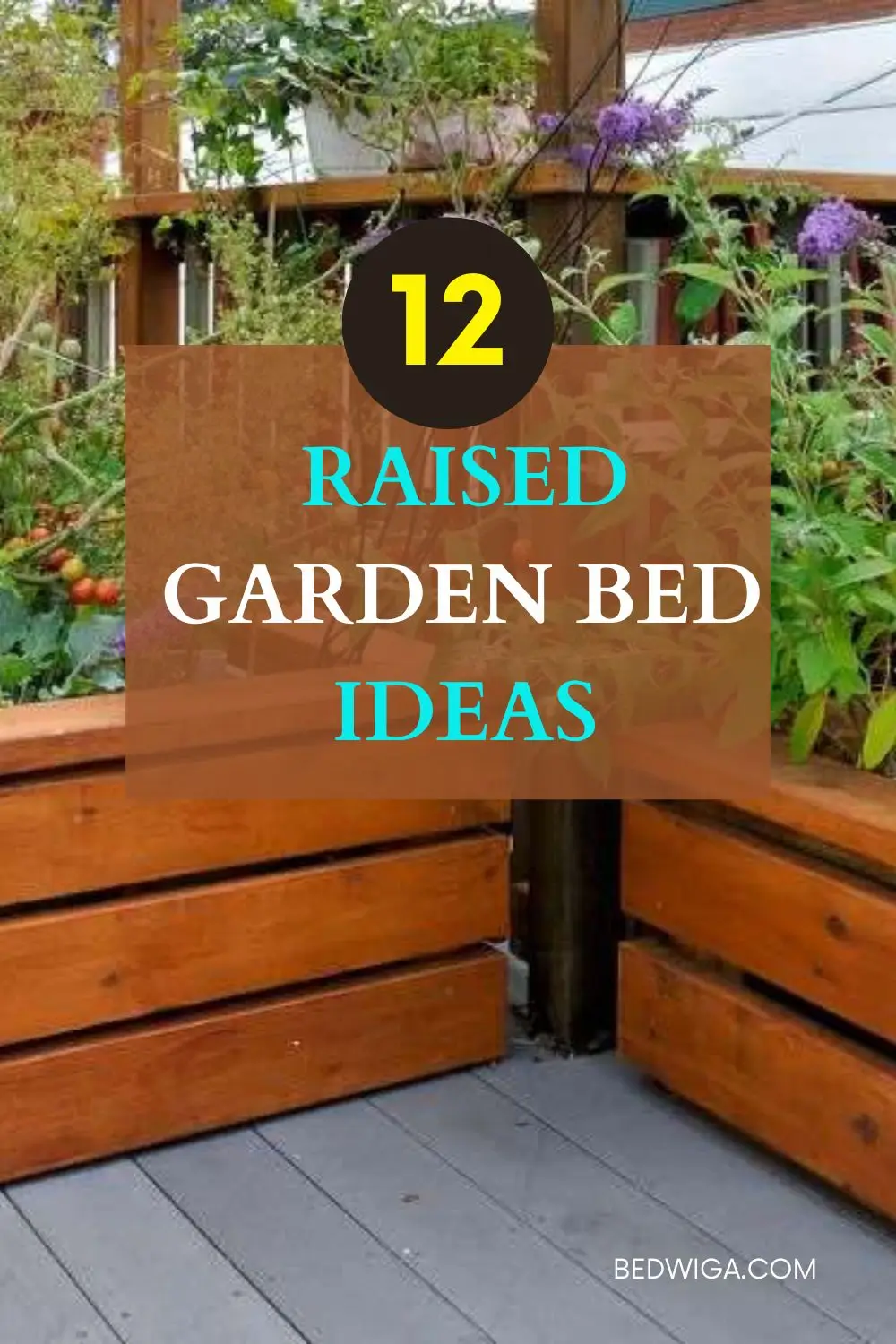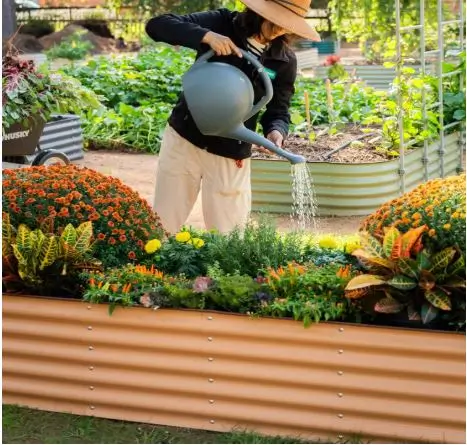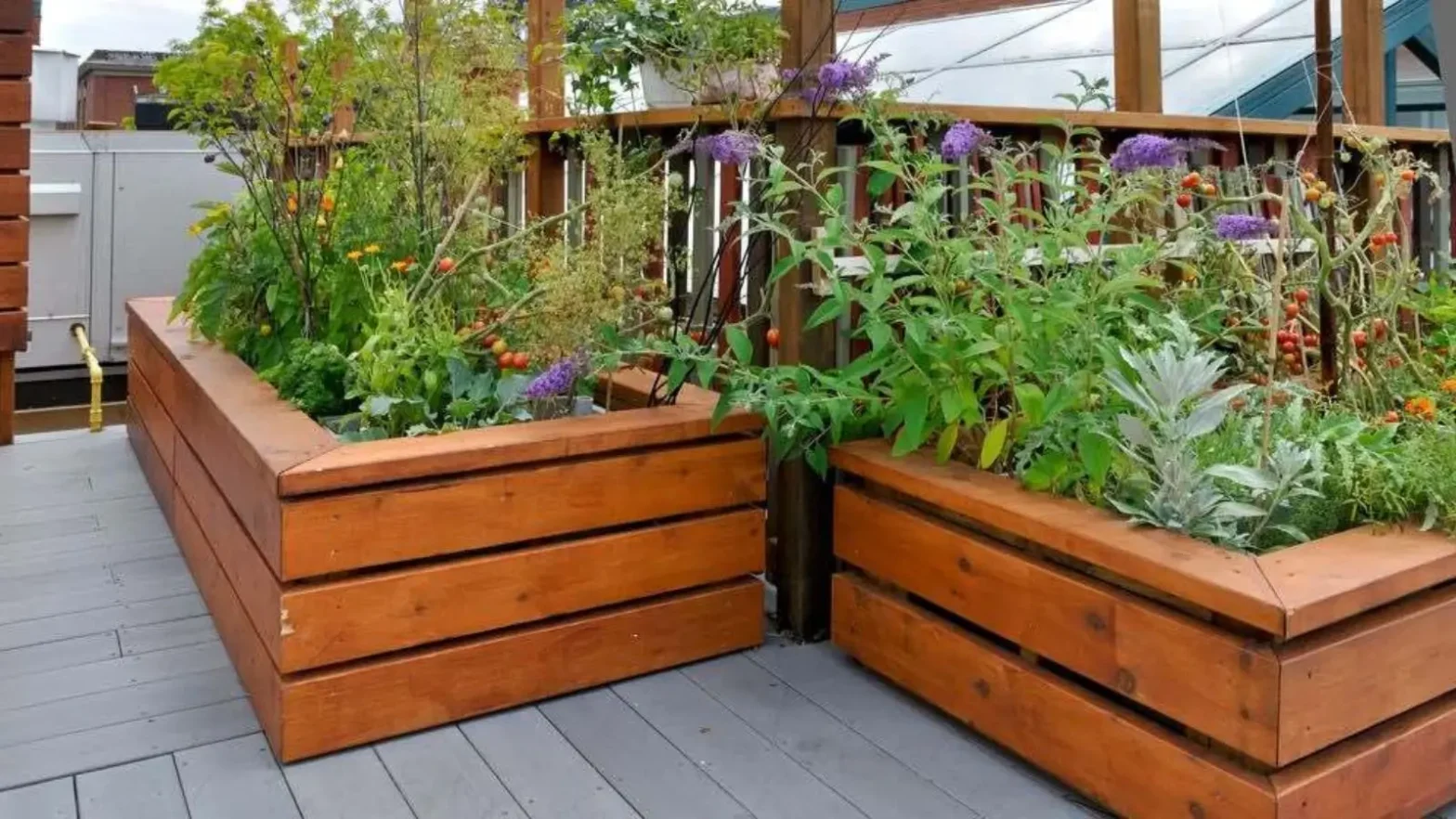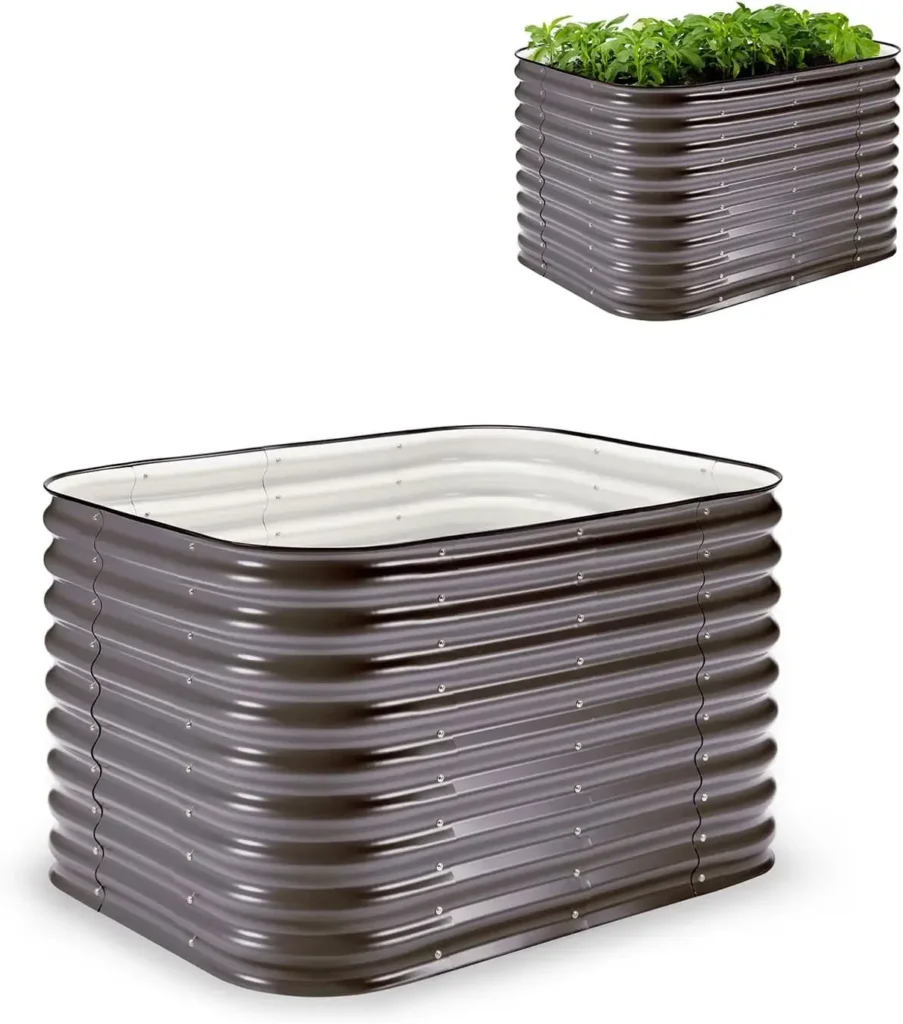Raised garden beds are a game-changer in the world of gardening. Whether you’re working with limited space, battling poor soil conditions, or aiming for a clean, modern aesthetic, raised garden bed ideas offer both practical and creative solutions.
As a seasoned gardener, I’ve spent years experimenting with various layouts, materials, and techniques—and let me tell you, not all raised beds are created equal.
From raised garden bed ideas cheap easy DIY, to more elegant raised garden bed ideas brick or raised garden bed ideas stone, the possibilities are endless.
And whether you’re planting vegetables, herbs, or exploring raised garden bed ideas flowers to boost curb appeal, the right bed design can transform your outdoor space into a thriving horticultural haven.
In this guide, I’ll explore 12 expertly selected raised garden bed ideas DIY—each tailored to different needs, budgets, and backyard setups.
I’ll cover everything from raised garden bed ideas for kids that spark curiosity and learning, to clever raised garden bed ideas layout plans that optimize productivity in small spaces.
Looking to spruce up your front yard? I’ve got raised garden bed ideas front of house too.
Dealing with uneven terrain? I’ll even tackle raised garden beds on a slope, so no gardener is left behind.
But before we dive into those genius ideas, let’s start with the basics.
What is a Raised Garden Bed?
A raised garden bed is essentially a framed container filled with soil, elevated above ground level. This design allows gardeners to control soil quality, improve drainage, and reduce compaction—resulting in healthier, more productive plants.
Unlike traditional in-ground gardening, raised beds make it easier to manage weeds, pests, and irrigation systems, and they’re especially advantageous in areas with poor native soil.
Raised beds can be constructed from a variety of materials, including wood, metal, brick, or stone, depending on the aesthetic and functionality you desire.
Whether you’re crafting raised garden bed ideas along fence lines to maximize space, or developing raised garden beds DIY layout plans for urban settings, the core principle remains the same: elevate and isolate your growing medium to give your plants the best environment possible.
Ready to get your hands dirty and transform your yard with raised beds that work as beautifully as they look?
Let’s dig into the top 12 raised garden bed ideas that I recommend to fellow garden enthusiasts.
12 Raised Garden Bed Ideas to Try Today

With years of hands-in-the-soil experience, I can confidently say that choosing the right raised bed setup can make or break your gardening journey.
Whether you’re after aesthetics, function, affordability, or accessibility, these raised garden bed ideas DIY will help you grow smarter, not harder.
I’ve selected each idea with care, considering common challenges like sloped terrain, limited space, curious children, and budget constraints. Ready to design your dream bed?
Let’s explore.
1. Raised Garden Bed Ideas Cheap Easy DIY
Let’s start with one of the most accessible options—raised garden bed ideas cheap easy DIY.
If you’re new to gardening or working with a tight budget, this is where to begin. You don’t need to spend a fortune to build an efficient and attractive raised bed.
Some of the most productive beds I’ve built have been from repurposed wood pallets, scrap lumber, or even old concrete blocks.
All you need is a sunny spot, untreated wood or recycled materials, a few screws, and a drill.
Line the bottom with cardboard or newspaper to suppress weeds, fill it with a rich mix of compost and topsoil, and you’re good to go.
These low-cost beds are not just beginner-friendly—they’re scalable, customizable, and incredibly satisfying to build by hand.
I recommend using cedar or pine if purchasing wood—it’s affordable, especially if you shop at local lumber yards, and relatively rot-resistant.
Just avoid pressure-treated lumber for edible crops. This method is ideal for urban dwellers, renters, or anyone who enjoys the craft of building their own grow space.
If you’re dealing with a backyard that needs quick transformation on a budget, this method gets results fast, often in a single afternoon.
Plus, the flexibility allows you to play with height and shape, helping you adapt your raised garden bed ideas layout even in awkward spaces.
Need a tip from the field? Always pre-drill your holes to prevent the wood from splitting and ensure the structure lasts through multiple growing seasons.
2. Raised Garden Bed Ideas Layout
A well-planned raised garden bed ideas layout can dramatically improve your harvests and reduce your workload. The key here is intentional design—grouping crops by sunlight needs, water requirements, and companion planting strategies.
One classic approach is the U-shaped layout, ideal for square or rectangular plots. It offers easy access from three sides and minimizes soil compaction.
Another favorite of mine is the keyhole layout, inspired by African gardening techniques. This circular design with a center compost basket maximizes nutrient delivery and conserves water—perfect for hot climates.
For small backyards, vertical stacking or tiered layouts work wonders. These not only maximize growing space but also create a dynamic aesthetic.
And if you’re gardening on a slope, staggered terraces allow for gravity-friendly watering while preventing erosion.
Use string, stakes, or chalk lines to map everything out before building. It may feel tedious at first, but trust me, good planning always pays off in lush, organized beds that practically manage themselves.
3. Raised Garden Bed Ideas Flowers
Who says raised beds are just for vegetables? Raised garden bed ideas flowers bring structure and elegance to your landscape, especially when you want color, pollinators, and visual balance.
Choose annuals like petunias, zinnias, and marigolds for a burst of seasonal flair or perennials like lavender, salvia, and black-eyed Susans for long-term beauty.
Flowers in raised beds are easier to weed, water, and deadhead—great for low-maintenance gardeners.
A pro tip: Group flowers by height with taller varieties in the center or back and trailing varieties along the edge. This layering technique ensures each plant gets sun while creating a lush, full display.
Add mulch to suppress weeds and maintain moisture. And if you’re integrating with veggies, flowers like nasturtiums and calendula also act as natural pest deterrents.
The result? A fragrant, vibrant display that’s just as practical as it is beautiful.
4. Raised Garden Bed Ideas Front of House
If you’re trying to improve curb appeal, raised garden bed ideas front of house offer a stylish and functional upgrade. These beds can transform a flat, uninspiring yard into a structured, colorful oasis.
Symmetrical beds on either side of your walkway or steps work beautifully. Use formal materials like stone or brick for a polished look, or opt for stained wood for a rustic vibe.
Fill with a mix of ornamental grasses, dwarf evergreens, herbs, and seasonal blooms.
Elevated beds in the front yard also make maintenance easier—no more stooping, and watering becomes more efficient. You can even incorporate low-voltage lighting around the perimeter for a dramatic nighttime effect.
Just remember to match the bed materials and plants with your home’s style and exterior color. Cohesion is key to that professionally landscaped look.
5. Raised Garden Bed Ideas DIY
If you love rolling up your sleeves, raised garden bed ideas DIY unlock endless possibilities. You can build with wood, stone, metal, or even repurpose old furniture frames and wine barrels.
The point is to tailor your beds to your exact space and needs.
I always encourage gardeners to start with a sketch. Think about the height (12–18 inches is ideal for veggies), shape (rectangles are easiest), and access points.
Pre-fabricated kits are available, but there’s real pride in creating your own from scratch.
If you’re working with kids, consider a low-height DIY project they can help with—perfect bonding activity, and it teaches them gardening skills early on.
DIY raised beds give you the freedom to innovate. Add built-in trellises for climbing plants or attach a hinged mesh cover to keep out pests. The sky’s the limit!
6. Raised Garden Bed Ideas Brick
For structure and permanence, few materials beat raised garden bed ideas brick.
Brick beds retain heat, which is great for early spring planting, and they age beautifully with time. Their timeless appearance fits both traditional and modern landscapes.
Dry-stacked or mortared, brick beds are great for straight lines and corners, and they won’t rot or warp like wood.
Use reclaimed bricks for a charming, weathered look, or choose new ones to match your home’s exterior.
The installation is more labor-intensive, but the payoff is longevity. These beds hold their shape and resist erosion—especially helpful on uneven terrain.
Insider tip: Install a plastic liner or landscape fabric between the bricks and soil to prevent alkaline leaching, especially if growing acid-loving plants like blueberries.
7. Raised Garden Bed Ideas Along Fence
Utilizing raised garden bed ideas along fence lines is one of my favorite ways to optimize space. This often-overlooked area is perfect for vertical growth and easy-access harvesting.
Install long, narrow beds parallel to your fence and grow crops like beans, tomatoes, or cucumbers using trellises or netting fixed to the fence itself.
You’re creating a productive vertical garden that saves space and looks neat.
Alternatively, plant a mix of flowers and herbs to soften the hardscape and attract pollinators. Fences also offer wind protection and can create warmer microclimates for sensitive plants.
Just ensure the bed gets at least 6–8 hours of sunlight—some fences can cast shade. And watch for water runoff or drainage issues from nearby structures.
8. Raised Garden Bed Ideas Cheap
If budget is top of mind, there are still fantastic raised garden bed ideas cheap that don’t sacrifice function.
Think outside the big-box store: use corrugated iron sheets, upcycled crates, old tires, or even stacked stones from your yard.
I’ve seen incredible beds made from leftover decking boards or hollow cinder blocks. With a little paint or stain, even humble materials can look high-end.
One golden rule—make sure the materials are safe for food production. Avoid painted or pressure-treated woods unless you add a protective liner.
Cheap doesn’t mean flimsy. Reinforce corners with metal brackets, and always secure your frames properly. These beds often outperform their more expensive counterparts, especially when built with intention and care.
9. Raised Garden Bed Ideas for Kids
Gardening is one of the best ways to teach children patience, responsibility, and biology. Raised garden bed ideas for kids focus on safety, fun, and engagement.
Keep beds short—around 6–10 inches high—and within easy reach. Use smooth, splinter-free wood or plastic materials.
Divide the space into small plots so kids can “own” their corner and grow fast-producing crops like radishes, lettuce, or strawberries.
Paint the outer panels in bright colors or let kids decorate them with outdoor-safe paint.
If possible, include a sensory garden—plants like mint, lamb’s ear, and basil are great for smell and touch.
Add small garden tools and watering cans designed for kids to create an inviting, hands-on experience.
And don’t forget signage! Labels with pictures and names help kids learn while they grow. I love this!!!🥰
10. Raised Garden Bed Ideas Stone
Nothing says durability and elegance like raised garden bed ideas stone. These beds offer unmatched permanence and blend beautifully into natural or rustic landscapes.
Use fieldstone, flagstone, or even stacked river rocks. Dry-stacked beds are easier to reposition, while mortared beds give you long-lasting structure. Either way, these beds resist pests, rot, and weathering far better than wood.
They take more time and effort to construct, but the payoff is timeless. If you’re planting perennials, shrubs, or even dwarf fruit trees, a stone raised bed makes the perfect frame.
And if you’re gardening on a slope, stone beds double as retaining walls—a win for both beauty and erosion control.
11. Raised Garden Bed Ideas Metal
Modern, sleek, and surprisingly low-maintenance—raised garden bed ideas metal are gaining popularity fast.
Galvanized steel or corrugated iron beds are durable, pest-resistant, and easy to assemble.
These beds retain heat longer, which can give your plants a jumpstart in spring. They’re especially useful in cooler climates or for heat-loving crops like tomatoes and peppers.
Worried about overheating? Simply line the interior with landscape fabric or cardboard to buffer the soil, or shade the bed during the hottest part of the day.
If this idea is ideal for you, I’d recommend the Epic Gardening 6-in-1 Modular Galvanized Raised Garden Bed Kit, 29″ (pictured ⬆) or Vego Garden Raised Garden Bed Kits, 17″, all from Amazon. The product is lightweight, rust-resistant.
12. Raised Garden Beds on a Slope
If your property isn’t level, don’t despair—raised garden beds on a slope can turn that challenge into a design advantage. The key is working with the grade, not against it.
Build tiered beds like stair steps down the slope. Each tier acts as its own micro-garden, with excellent drainage and visual appeal.
Use materials like stone, brick, or timber that won’t shift with rain and gravity.
Start by leveling each bed section before building the frame. Add stakes or rebar for extra reinforcement if necessary.
Terraced raised beds also help prevent soil erosion and manage water runoff efficiently.
This approach works great for herbs, flowers, or compact veggies.
And from an aesthetic standpoint, nothing beats the layered, architectural look of terraced gardens cascading down a hillside.
Expert Tips to Make the Most of Your Raised Garden Bed Ideas
Over the years, I’ve learned a few key lessons that can make all the difference in the success of your raised beds, regardless of material, layout, or location.
Prioritize Soil Quality
Your raised bed is only as productive as the soil inside it. Use a 60-30-10 mix of topsoil, compost, and perlite or coarse sand. Refresh with compost each season.
Water Wisely

Install drip irrigation or soaker hoses to conserve water and reduce fungal issues. Avoid overhead watering when possible, especially with raised garden bed ideas flowers, and vegetables.
Plan for Accessibility
Ensure paths between beds are wide enough for wheelbarrows or kneeling. This matters even more for raised garden beds on a slope or if you’re planning raised garden bed ideas for kids.
Companion Planting Matters
Design your raised garden bed ideas layout with complementary plants. Basil near tomatoes, marigolds near peppers—it all contributes to healthier crops and fewer pests.
Rotate Crops Every Season
Don’t plant the same crop family in the same bed year after year. Rotation preserves soil nutrients and prevents disease buildup.
FAQs About Raised Garden Bed Ideas
Q1: What’s the best height for a raised garden bed?
A: For most vegetables, 12 to 18 inches is ideal. Shallow-rooted herbs and flowers may do well in beds as low as 6 inches.
Q2: Can I build a raised garden bed without tools?
A: Absolutely. Many raised garden bed ideas cheap easy DIY involve stackable materials like cinder blocks or stone that require no nails or screws.
Q3: How do I protect my raised beds from pests?
A: Use floating row covers, mesh lids, or even simple netting—especially helpful for raised garden bed ideas along fence where critters might sneak in.
Q4: What’s the best material for longevity?
A: Raised garden bed ideas stone and raised garden bed ideas metal offer the longest lifespan, often lasting 10–20 years with minimal upkeep.
Q5: How can I improve drainage in my raised beds?
A: Elevate the base with gravel or landscape fabric and never use compacted soil. Good drainage is crucial for healthy roots, especially in raised garden beds DIY layout setups.
Summary: Build Beds That Work as Hard as You Do
Creating functional, beautiful raised beds is both an art and a science.
From raised garden bed ideas cheap easy DIY for beginners to elegant raised garden bed ideas brick and space-maximizing raised garden bed ideas along fence, you’ve now got a toolbox of expert-approved ideas for every yard, style, and budget.
To recap, here are three standout ideas worth trying:
- Raised garden bed ideas front of house – for that eye-catching curb appeal.
- Raised garden bed ideas for kids – nurture curiosity and grow together.
- Raised garden bed ideas on a slope – master tough terrain with tiered brilliance.
Choose the one that fits your space, gather your tools (or recycled materials), and start building. Raised beds are more than just trendy—they’re practical, productive, and endlessly customizable.
Ready to Get Growing?
It’s time to transform your outdoor space into a lush, productive garden—no matter the challenges.
Whether you’re drawn to raised garden bed ideas DIY, planning a thoughtful raised garden bed ideas layout, or looking for raised garden bed ideas metal that last a lifetime, there’s a perfect fit waiting for your green thumb.
Start small, grow smart, and let your garden speak for your passion. 🌱



